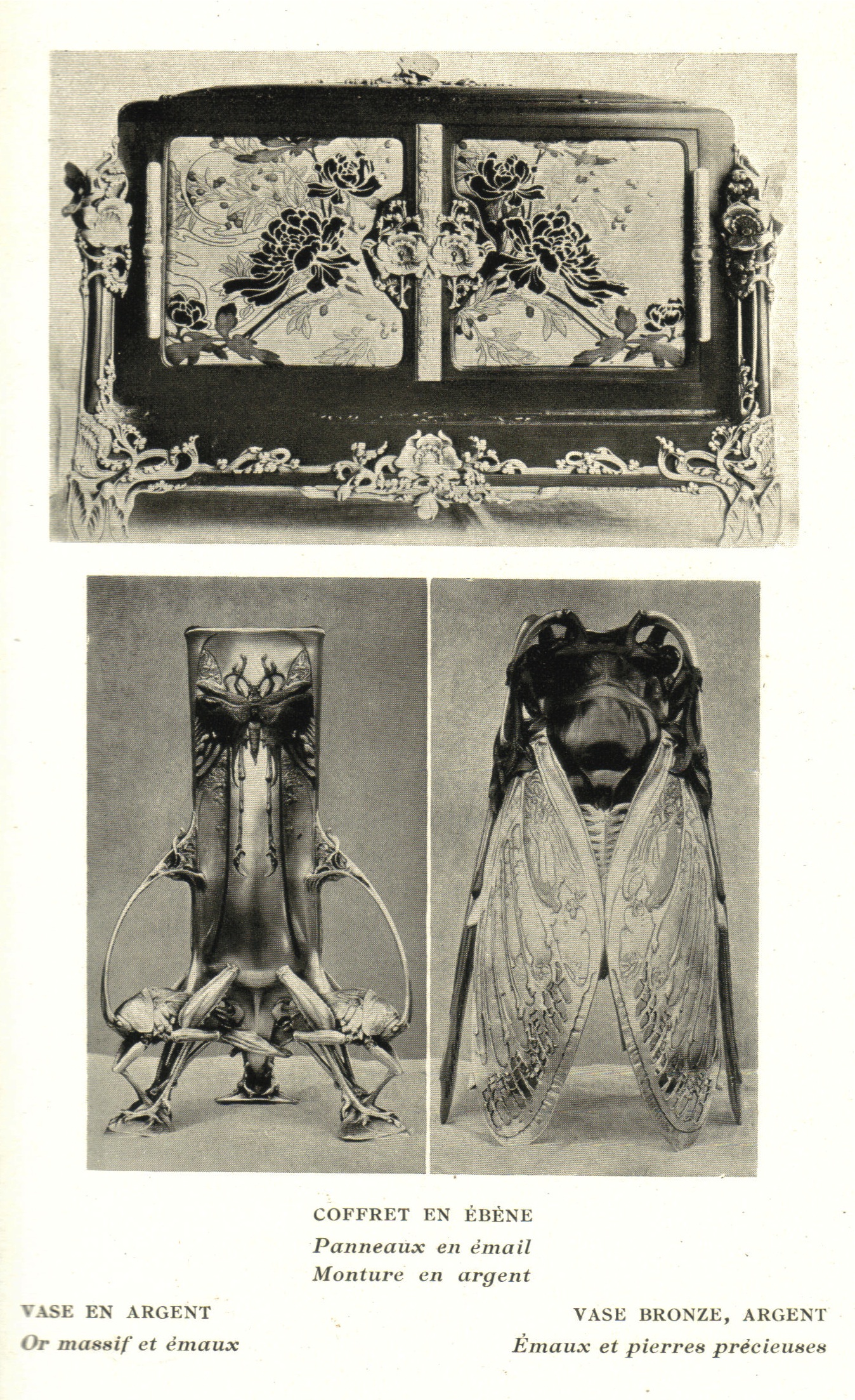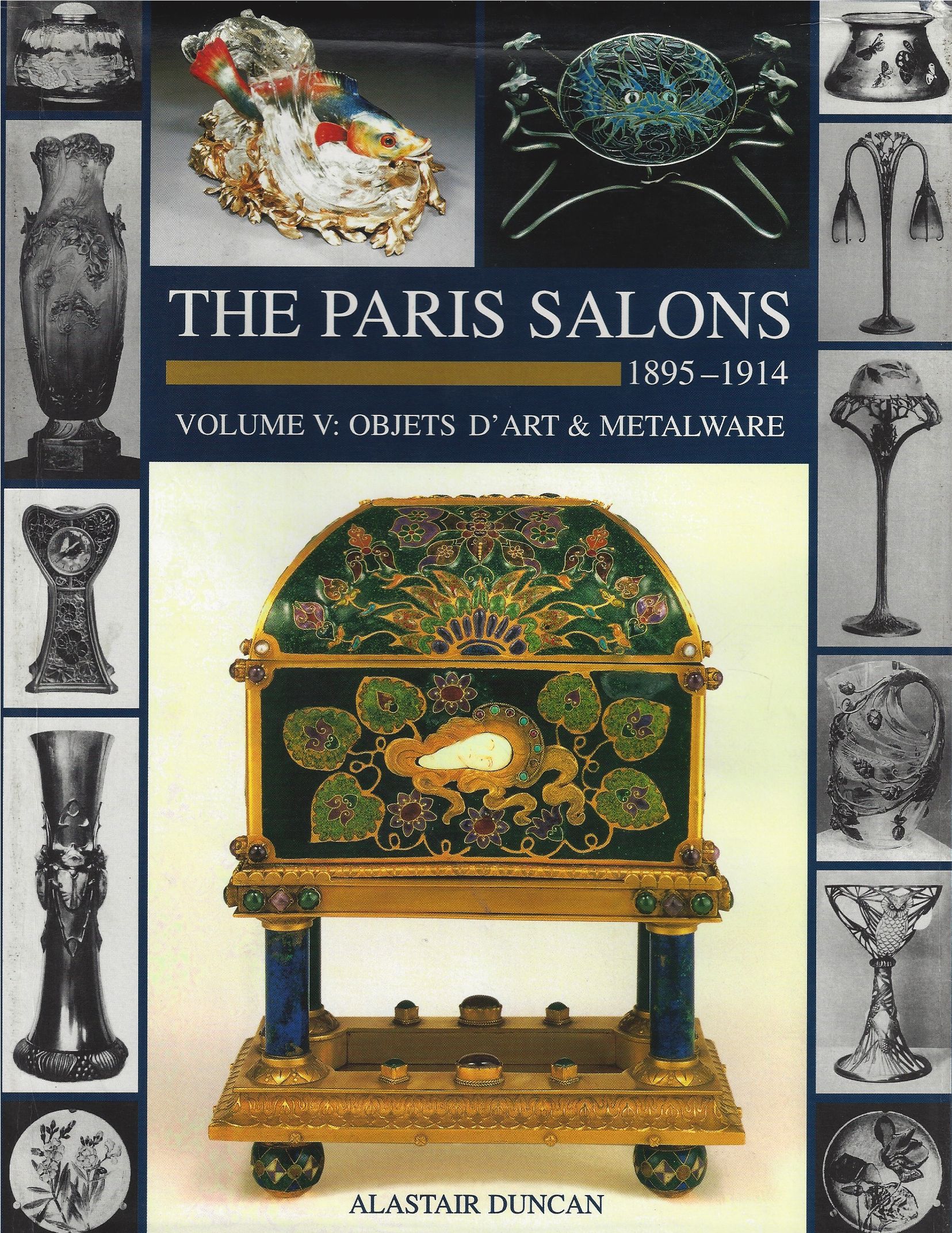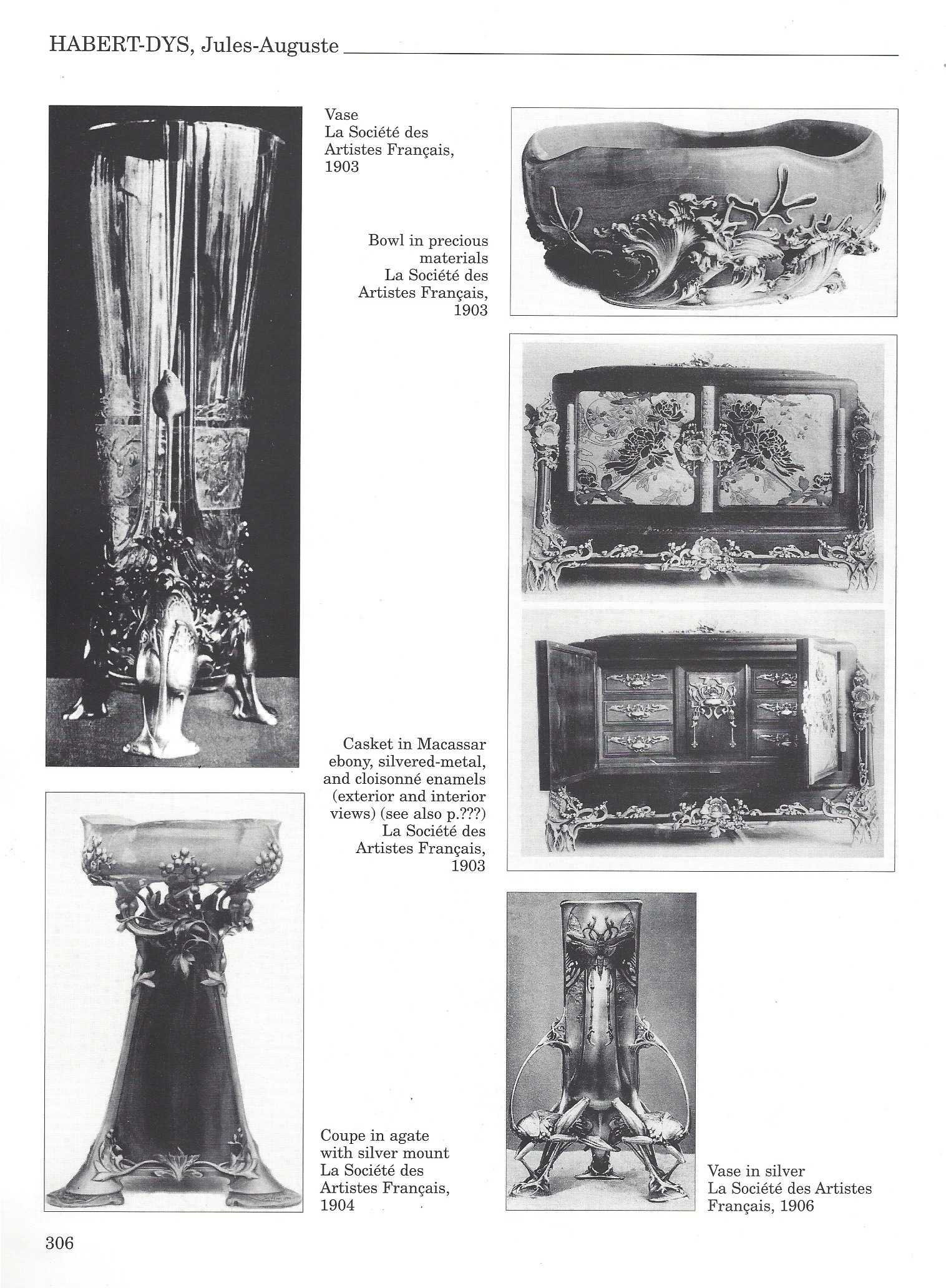Inscribed J. Habert-Dys 1902 and stamped with hallmarks for Fernand Poisson
17 in (43 cm) high, 23 ¼ in (59 cm) wide, 13 ¾ in (35 cm) deep
Exhibited
La Société des Artistes Français, 1903
Literature
Henri Classens, Habert-Dys Maitre-Décorateur, 1924, p.49
Alastair Duncan, The Paris Salons 1895-1914, vol.V: Objets d'Art & Metalware, 1999, p.306
Habert-Dys executed a number of boxes, vases and other containers, combining fine and rare woods with bronze, ivory, gold, horn, ebony, pearls or semi-precious gemstones, varying the finishes with every available technique, including enamelling, burnishing and acid-etching. The coffret shown here is one of his finest, combining and contrasting macassar ebony and satinwood, silver by Poisson with elaborately enamelled floral panels of Japanese inspiration. Fernand Poisson was a fine silversmith who had studied with the Fannière brothers before succeeding to their business. He married Habert-Dys’ daughter and executed several silver creations designed by Habert-Dys, inspired by exaggerated stylisation of insect exoskeletons. The present piece was exhibited at the Salon of the Société des Artistes Français in 1903 to great critical acclaim.
Habert-Dys was born in Fresnes into a poverty-stricken, illiterate family. He revealed a talent for drawing, and his father apprenticed him as a house-painter to a firm which decorated churches and chapels. He continued to practise his drawing, and was employed at the age of 17 as a decorator in a large ceramics factory at Blois run by Ulysse Bernard, who guided him for the next five years. In 1874 he moved to Paris to study painting and entered Gerome’s studio at the Ecole des Beaux-Arts, also joining the Laurin pottery at Bourg-la-Reine.
In 1877 he joined the Haviland ceramics workshop, run by Felix Bracquemond, where he spent two years with Bracquemond and Charles Haviland exploring Japanese art which had been on display at the 1878 Paris Exposition Universelle. He began exhibiting at the Salons of the Société des Artistes Français in 1876 with two painted earthenware panels, and was later awarded a Mention Honorable in 1891, a Third Class Medal in 1903 and a Second Class Medal in 1904 for painting, having been awarded a Mention Honorable for engraving in 1884. In 1879 he joined the Schopin ceramics works at Montigny-sur-Loing, spending as much time as he could exploring the countryside and sketching plants, birds and insects.
He executed more work for Haviland before Bracquemond introduced him to the artistic director of the magazine L’Art to which he contributed some 500 drawings in five years, his growing fame leading him to contribute to many other publications, to tutor some visiting Swedish princesses and even to turn down a commission from the King of Belgium because he was too busy.
The death of his young son brought about a nervous breakdown, and he convalesced at Pau, financed by Baroness Nathaniel de Rothschild. Over the next few years he published albums of decorative designs for use as fans, wallpaper, jewellery, ceramics and glass in France and Germany, supplied designs for British and American firms and was commissioned to design a table service for Pillivuyt and another by Theodore Deck. In 1894 he exhibited mural decorations at the Lyons International Exhibition, for which he was awarded a Gold Medal. A year later he joined the leading art printer of Paris, Lemercier, as artistic director.
Several of his books accompanied basic designs with highly decorative Art Nouveau detailing, and at the turn of the century he increasingly devoted himself to producing works that he had previously only designed.
In 1907 Habert-Dys was appointed Professor of Drawing at the École Nationale des Arts Décoratifs. At the same time he began experimenting with glass, producing a rare and highly collectible group of encrusted coloured glass vessels with great depth of colour and translucency, partly covered by surface trailings of metal. When these were first exhibited at the 1913 Salon, he was awarded a Gold Medal. He also exhibited at the Salon d’Automne, for which he was a Member of the Jury, and the Salons of the Société des Artistes Décorateurs.
Works by Habert-Dys can be found in the collections of the Musée d’Orsay, Musée des Arts Décoratifs, Musée de Nantes, Musée de Sèvres, the Minneapolis Institute of Arts, the Pierpont-Morgan Collection, the Rothschild Collection and the Musée du Luxembourg.




















